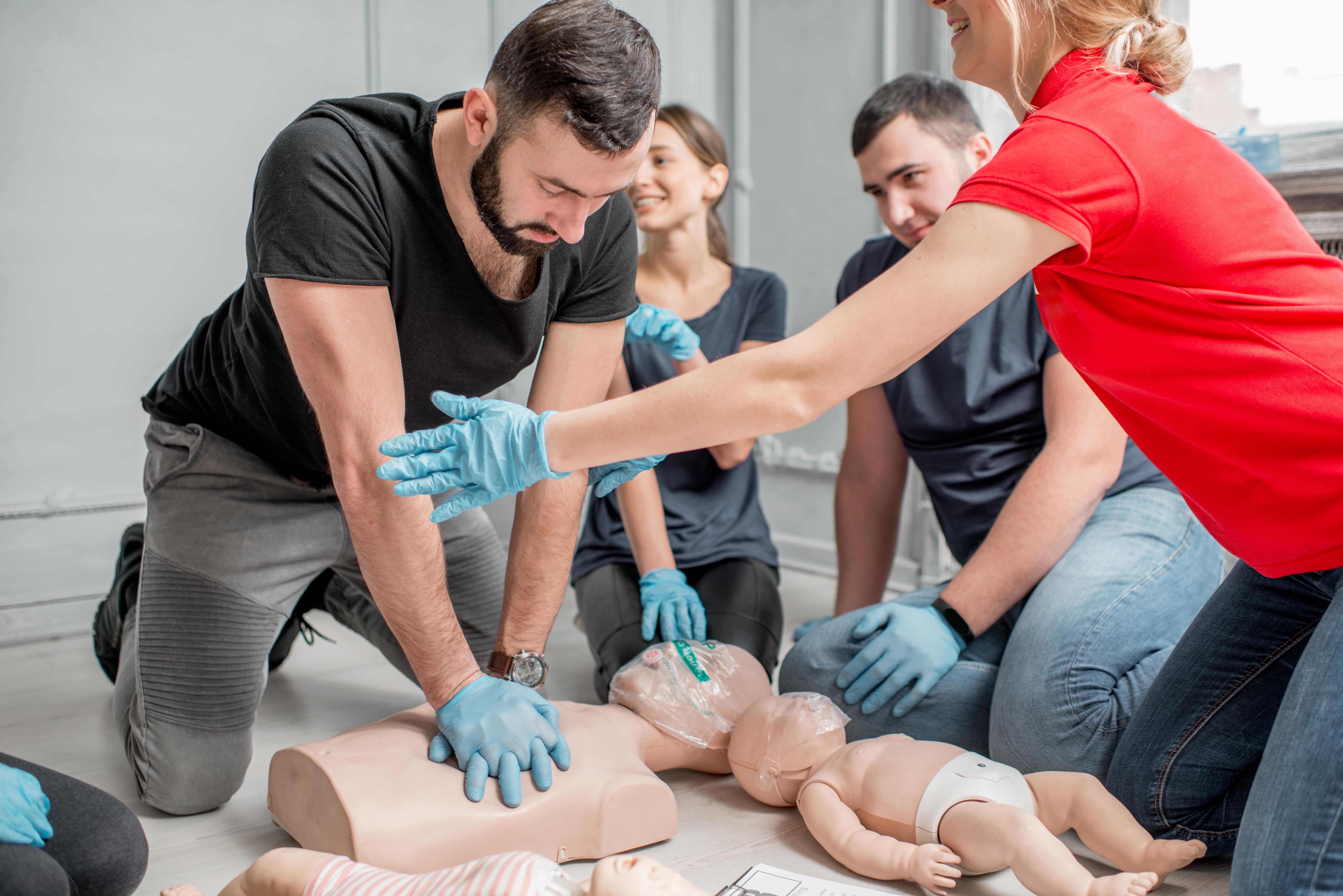Introduction
In today's fast-paced workplace, safety is paramount. Organizations are increasingly identifying the significance of producing a safe space for workers. One of the most important elements of workplace security training is first aid and CPR (Cardiopulmonary Resuscitation) training courses. These courses not just equip employees with crucial life-saving abilities however likewise foster a culture of security within the company. In this short article, we will certainly delve into the myriad reasons workplace security training need to include first aid and mouth-to-mouth resuscitation courses, underscoring their value in boosting workplace safety.
Why Workplace Security Training Should Consist Of First Aid and Mouth-to-mouth Resuscitation Courses
The assimilation of emergency treatment and CPR courses into work environment security training has far-ranging advantages. They equip workers with the knowledge and abilities necessary to respond efficiently to clinical emergencies, decrease recuperation time for damaged people, and potentially save lives. Moreover, having educated personnel on-site can impart self-confidence amongst employees and comfort them that their health is prioritized.
Understanding First Aid
First aid describes the immediate treatment provided to an individual struggling with a minor or significant disease or injury until specialist clinical aid gets here. Comprehending standard emergency treatment concepts can make a considerable difference in emergency situations.
Key Elements of First Aid
Assessment: The ability to analyze a circumstance promptly can assist determine the appropriate actions needed. Stabilization: Comprehending just how to support a hurt individual prevents more harm. Communication: Properly connecting with emergency solutions is vital for prompt assistance.The Importance of CPR
CPR is a life-saving technique utilized in emergency situations when somebody's heartbeat or breathing has actually quit. It involves breast compressions and rescue breaths to preserve blood circulation and oxygenation until expert help arrives.
How mouth-to-mouth resuscitation Works
- Chest Compressions: These help flow blood throughout the body. Rescue Breaths: These supply oxygen to the lungs.
Benefits of Emergency treatment and CPR Certification
Obtaining an emergency treatment certification or finishing mouth-to-mouth resuscitation programs includes many advantages, both for individuals and organizations.
Enhanced Employee Confidence: Employees feel much more protected knowing they possess life-saving skills. Reduced Healing Time: Quick response through first aid can cause far better end results for damaged individuals. Compliance with Regulations: Numerous markets require licensed employees as component of their health and safety regulations.Creating a Culture of Safety And Security With Training
Implementing first aid and CPR training promotes a society that prioritizes worker well-being.
Encouraging Teamwork
Training sessions usually entail team-building workouts that enhance partnership amongst employees.
Building Count on Between Staff members and Management
When administration buys CPR Course Sydney CBD staff member training, it shows dedication to their health, bring about enhanced morale.
First Aid Surges vs. Mouth-to-mouth Resuscitation Courses: What's the Difference?
While both types of training courses are vital, they focus on different skill sets.

First Help Courses
These courses cover a wide range of topics beyond just cardiac emergencies, including:
- Wound care Burns Choking
CPR Courses
CPR training courses specifically concentrate on techniques connected to cardiac arrest situations, emphasizing:
- Adult CPR Child/ infant resuscitation Use of an Automated External Defibrillator (AED)
Choosing the Right Training Provider
Not all training service providers are produced equal; consequently, choosing one that meets your organization's needs is critical.
Accreditation Matters
Ensure that your picked supplier offers approved programs identified by appropriate authorities.
Instructor Experience
Consider trainers' credentials; skilled instructors often supply richer learning experiences through real-world examples.


Incorporating Emergency treatment right into Office Safety Policies
Organizations must integrate first aid requirements right into their wider safety policies for thorough coverage.
Regular Training Updates
Conducting normal refresher courses ensures that understanding remains existing amongst employees.
Creating Emergency situation Action Plans
Having clear plans in place can guide qualified employees during emergencies.
Legal Implications of Emergency treatment Training in the Workplace
Employers have legal obligations relating to workplace security; implementing first aid training can assist reduce threats related to non-compliance.
Negligence Claims
Failure to offer appropriate training might leave companies susceptible to lawsuits if an incident occurs as a result of absence of preparedness.
FAQ Section
What is consisted of in a typical emergency treatment course?- A regular emergency treatment course includes direction on examining injuries, dealing with wounds, managing burns, managing choking events, and executing CPR if necessary.
- Most CPR programs last between 4-- 6 hours depending on whether it's standard or advanced training.
- While not always legally mandated, having actually accredited staff members can substantially improve work environment safety and security standards.
- Many accredited organizations use online revival choices for first aid certificates which include evaluations through video clip conferencing.
- Yes, sectors such as construction, healthcare, education, and manufacturing usually have regulatory requirements demanding qualified workers on site.
- It's recommended that workers participate in refresher courses every 2 years or sooner if there are substantial modifications in procedures or regulations.
Conclusion
To sum up, incorporating first aid and mouth-to-mouth resuscitation into work environment security training is not just a choice but a necessity in today's workplace where emergency situations can emerge anytime. Organizations benefit greatly from having actually educated workers ready to respond effectively throughout crises while cultivating an atmosphere where staff member well-being takes priority over all else. Consequently, it comes to be noticeable why office safety and security training must include emergency treatment and CPR training courses-- they conserve lives while advertising a positive approach towards health and wellness requirements within organizations across different sectors.
By focusing on such necessary training initiatives-- first aid certificates obtained with reliable providers along with useful hands-on experience-- companies can considerably improve their overall emergency situation readiness degrees while additionally constructing more powerful groups efficient in dealing with any kind of situation head-on!